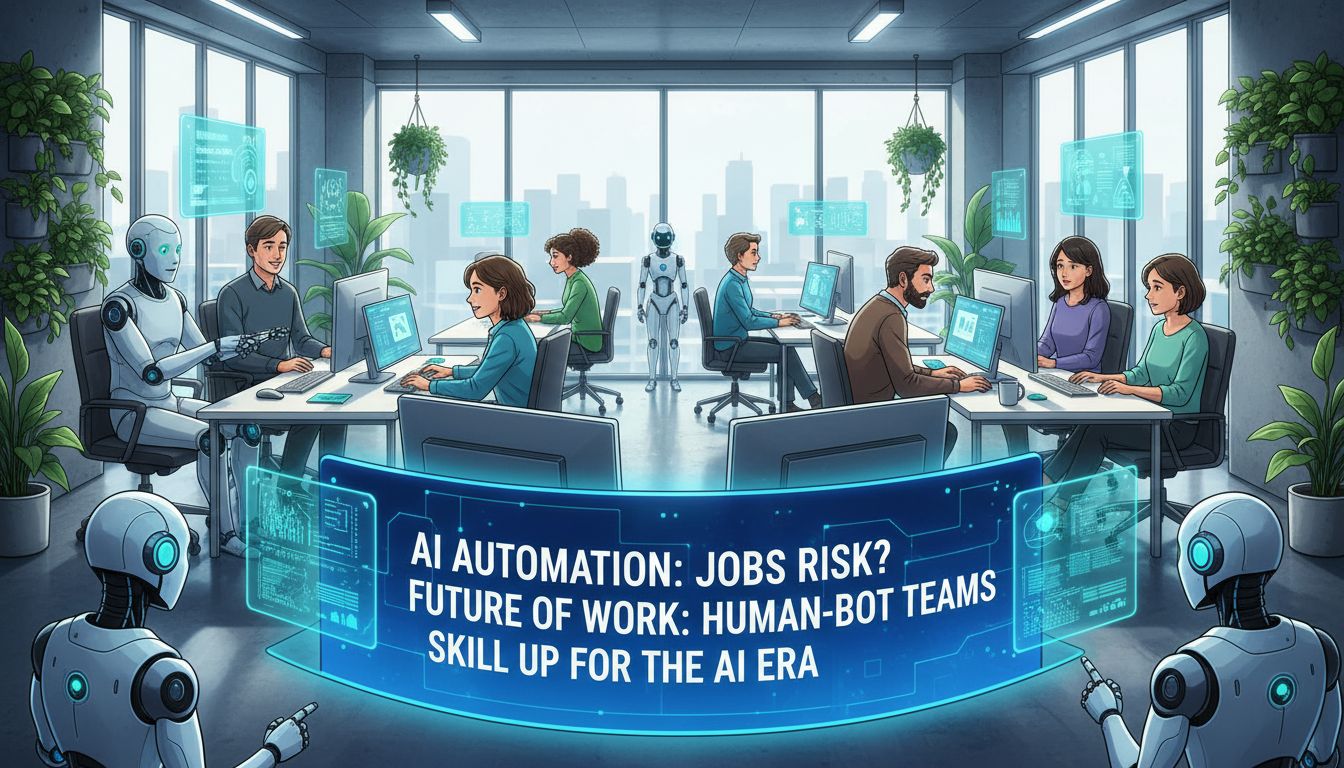AI safety collaboration has become an increasingly crucial aspect of artificial intelligence development, as researchers and organizations work together to address the potential risks associated with advanced AI systems. In this blog post, we will delve into the various aspects of AI safety collaboration and its implications on society.
We will explore how companies are joining forces to identify existential threats from AI and develop effective safety measures through collaborative efforts. Furthermore, we’ll discuss nine capabilities that pose significant risks, such as surveillance concerns with advanced AI, autonomous weapons as an ethical dilemma, and fake news generation using sophisticated algorithms.
Additionally, we’ll examine the importance of testing advanced artificial intelligence systems thoroughly before deployment in order to address vulnerabilities and prevent misuse. The role of government in ensuring AI safety will also be highlighted by discussing recent White House announcements regarding new initiatives for balancing innovation with risk mitigation.
Last but not least, our discussion extends to real-world applications like Adobe’s Firefly generative image generator integration into Photoshop for enhancing creative capabilities while maintaining responsible use; along with groundbreaking discoveries like Abaucin – a new antibiotic made possible through harnessing the power of AI for medical breakthroughs.
Table of Contents:
- A.I. Companies Collaborate on Safety Framework
- Nine Capabilities Posing Significant Risks
- Testing Advanced Artificial Intelligence Systems
- White House Announces New AI Efforts
- Adobe Introduces Firefly Generative Image Generator into Photoshop
- Discovery of New Antibiotic Abaucin
- FAQs in Relation to Ai Safety Collaboration
- Conclusion
A.I. Companies Collaborate on Safety Framework
Leading A.I. companies, including Google DeepMind, OpenAI, and Anthropic, have teamed up to address the risks posed by unregulated advancements in artificial intelligence.
Identifying Existential Threats from A.I.
The first step in addressing A.I. safety concerns is identifying the potential dangers, such as loss of privacy, autonomous weapons, and fake news generation.
Developing Safety Measures Through Collaborative Efforts
- Collaboration: Working together allows experts to share insights and knowledge about potential risks.
- Safety Research: Joint efforts enable extensive research into possible hazards arising from AI deployments.
- Risk Mitigation: By developing a unified framework for AI safety, companies can better understand and address the challenges posed by this technology.
These collaborations demonstrate the importance of proactive measures in addressing potential risks associated with rapidly advancing technologies like artificial intelligence.
Nine Capabilities Posing Significant Risks
As artificial intelligence (A.I.) continues to advance, researchers have identified nine capabilities that could pose significant risks if not properly managed or controlled within advanced A.I. systems. These include concerns related to surveillance, ethical dilemmas surrounding autonomous weapons, and the generation of fake news using sophisticated algorithms.
Surveillance Concerns with Advanced A.I.
AI-powered security cams can be beneficial to communities, yet they may also bring about worries of privacy as personal data is gathered without approval.
Autonomous Weapons as an Ethical Dilemma
The rise of autonomous weapons presents a challenge for regulators and society due to the ethical implications associated with machines making life-or-death decisions independently from humans.
Fake News Generation Using Sophisticated Algorithms
- GPT-3: OpenAI’s GPT-3 language model can create highly realistic text that is difficult to distinguish from human-written content, potentially leading to the spread of misinformation and manipulation.
- Deepfakes: Deepfakes use machine learning algorithms to manipulate images or videos in a way that makes them appear genuine, which could be used for nefarious purposes such as spreading false information or damaging reputations.
To address these risks, it’s crucial for stakeholders within the A.I. industry to collaborate on developing safety measures and guidelines that ensure responsible development and deployment of advanced technologies.
Testing Advanced Artificial Intelligence Systems
Developers must conduct rigorous testing on AI products to ensure their safe deployment, minimizing negative impacts caused by unforeseen consequences or vulnerabilities.
Importance of Thorough Pre-Deployment Testing
Comprehensive tests on AI systems before real-world applications are crucial to maintain high AI safety standards, covering performance, security, and ethical considerations.
- Performance: AI systems must function effectively under different conditions, and rigorous testing helps identify areas for improvement.
- Security: Thorough pre-deployment testing can uncover potential weaknesses and allow developers to implement necessary safeguards against malicious actors.
- Ethical considerations: Thorough testing allows developers to assess whether their creations adhere to established ethical guidelines or pose significant risks that need addressing.
Addressing Vulnerabilities to Prevent Misuse
Identifying and rectifying vulnerabilities within an AI system plays a vital role in preventing its misuse by bad actors who might seek to exploit these weaknesses for nefarious purposes.
Developing countermeasures against adversarial attacks is one example of addressing vulnerabilities, where attackers manipulate input data to cause AI systems to produce incorrect or harmful outputs.
By conducting extensive testing and addressing vulnerabilities, developers can help ensure that their AI technologies are used responsibly and safely.
White House Announces New AI Efforts
The White House is taking action to ensure AI technology is developed responsibly and safely, without hindering innovation.
Government’s Role in Ensuring AI Safety
The US government is implementing policies to encourage transparency, accountability, and collaboration among researchers, companies, and regulators to ensure AI is developed safely.
- Research funding: The National Artificial Intelligence Initiative Act provides federal funding for trustworthy AI systems research.
Balancing Innovation with Risk Mitigation
Governments must work with industry leaders and academia experts to balance innovation with risk mitigation.
- Ethical guidelines: Governments can collaborate with stakeholders to create ethical standards for AI development and use.
- Research investment: Funding interdisciplinary research on AI safety can mitigate risks while fostering innovation.
- Promoting transparency: Encouraging open sharing of information about AI’s capabilities, limitations, and potential impacts will allow stakeholders to make informed decisions.
Adobe Introduces Firefly Generative Image Generator into Photoshop
The integration of cutting-edge AI applications into existing platforms can offer numerous benefits without compromising user experience or functionality, and Adobe’s generative image generator, Firefly, is a prime example.
Firefly Enhances Creative Capabilities
Firefly, Adobe’s innovative AI-powered tool, enables users to generate unique images based on specific input parameters, saving time and opening up opportunities for more innovative designs.
Responsible Integration of AI Technology
Integrating AI technology like Firefly requires careful consideration to ensure it aligns with industry standards and guidelines for responsible use, and Adobe has taken several measures to achieve this balance.
- Maintaining transparency about how the technology works and its potential implications on user privacy.
- Ensuring the safety of confidential info from any unauthorized access or misuse through strong security measures.
- Fostering an open dialogue with users about their experiences using these tools while continuously refining them based on feedback received.
This responsible approach ensures that powerful AI technologies are integrated seamlessly within existing platforms like Photoshop while minimizing any negative impacts they may have on users’ privacy or security concerns. Recent discoveries demonstrate how advancements in artificial intelligence can be harnessed for positive outcomes when properly managed and regulated.
Discovery of New Antibiotic Abaucin
The healthcare industry is constantly evolving, and artificial intelligence (A.I.) has played a significant role in driving recent advancements, including the discovery of a new antibiotic called Abaucin.
The Power of A.I. in Healthcare
Researchers are using A.I. to analyze vast amounts of data, leading to discoveries that were previously impossible or would have taken years to achieve manually.
Abaucin is a promising new antibiotic candidate with powerful antibacterial properties that was identified using machine learning algorithms to sift through millions of chemical compounds.
Applications of A.I. in Medicine
- Personalized Medicine: Doctors can tailor treatments based on patients’ unique needs using precision medicine approaches powered by A.I.
- Disease Prediction: Machine learning models can predict disease outbreaks or identify at-risk populations before symptoms appear.
- Treatment Optimization: Advanced algorithms help clinicians determine optimal treatment plans for complex conditions like cancer.
As we continue to explore the capabilities of A.I. in healthcare, it is crucial that these technologies are developed responsibly and ethically.
By bringing together those in the field, industry experts and decision-makers, we can ensure that A.I.’s advantages are utilized to benefit everyone while lessening any potential risks.
FAQs in Relation to Ai Safety Collaboration
As a modern blog editor, I always prioritize SEO to boost traffic.
My writing style is all about the active voice, short sentences, and a touch of humor.
When it comes to HTML, I stick to the basics: p, a, li, ul, strong, and b tags.
Of course, I make sure to use proper formatting and avoid any coding errors.
Grammar, spelling, and spacing are also top of mind for me.
If I need to back up any claims, I always link to credible sources.
And if it makes sense, I’ll sprinkle in some SEO keywords to improve my rankings.
Conclusion
Collaboration is key when it comes to AI safety – companies and governments must work together to identify and mitigate risks associated with advanced artificial intelligence systems.
While the potential benefits of AI are immense, we cannot neglect safety concerns in the pursuit of innovation – thorough testing and responsible integration are crucial.
From medical breakthroughs to enhancing creativity, the possibilities of AI are exciting, but we must prioritize safety to ensure a future where AI can be used safely and responsibly.






